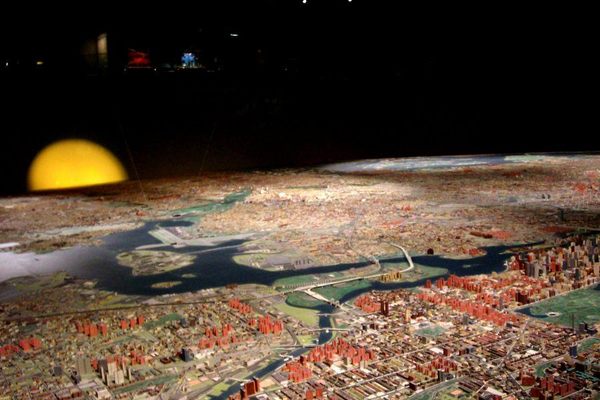Relics of The World’s Fair: Barcelona
Palau Nacional, Montjuïc, Barcelona (photograph by runner310/Flickr user)
After visiting Paris and Chicago, Atlas Obscura’s tour of Worlds’ Fair relics stops next in Barcelona, home to two world’s fairs — one in 1888, and one in 1929.
For the citizens of Barcelona in 1888, the most notable feature of the fair was a certain landmark’s absence. A few years beforehand, the city had begun tearing down an old Spanish citadel dating from a war in the 1700s, when Barcelona was subsumed into the country of Spain. Barcelona’s citizens had long considered the Citadel as an unpleasant reminder of the war, and were eager to remove it; the de-construction had begun a hundred years prior. The fair gave Barcelona even more impetus to raze the building to clear space for fairgrounds.
Aerial view of the Exposición Universal de Barcelona in 1888 (via Wikimedia)
View of the Exposició Universal de Barcelona in 1888 (via Wikimedia)
Today, the Parc de la Ciutadella in Barcelona is laid out just as it was for the 1888 fair; Barcelona’s zoo reuses a number of World’s Fair buildings, and a Memorial Arch that served as the 1888 fair’s access gate lies nearby. Also, just as was the case in 1888, there are almost no traces of the citadel left.
Parc de la Ciutadella today (photograph by Jaume Meneses)
The arch in 1888 (via Wikimedia)
The Memorial Arch (photograph by Matti Mattila)
Barcelona placed another monument outside the Parc: the Columbus Monument, a 60-foot tower commemorating Christopher Columbus’ first voyage. It was meant to remind visitors that Columbus may have been working for King Philip and Queen Isabella — but that he met with them in Barcelona. The monument bears a series of bas-relief images depicting scenes from Columbus’ first voyage, and commemorates other members of Columbus’ expedition party; at the very top is a statue of Columbus heroically pointing out to sea. Inside the column is a viewing platform just beneath Columbus’ feet.
The Columbus Monument (photograph by Morgaine/Flickr user)
Barcelona’s Olympic Stadium is best known as the site of the 1992 Summer Olympics, but it was originally built for the 1929 World’s Fair to host a series of friendly exhibition games between Worlds’ Fair nations in various sports. Barcelona used its stadium as a selling point in its bid for the 1936 Summer Olympics, but lost to Berlin. The stadium then became home to a series of soccer teams before falling into disrepair in the 1970s. When Barcelona won its bid to host the 1992 Summer Olympics, the city renovated the stadium, but preserved the 1929 façade.
The stadium today (photograph by Kiko Alario Salom)
Inside the stadium (photograph by Emilio Garcia)
Grander still is the Palau Nacional, the fair’s main exhibition hall. Barcelona’s 1929 fair focused on the history of art, and the hall featured contributions from 5,000 artists and museums across Spain. The building also sported murals by Catalan artist Francesc d’Assís Galí, who, in his contract, was charged with depicting “the grandeur of Spain, justified in a symbolic composition defined by four fields; Religion, Science, the Fine Arts and Land.”Gali’s work adorns the inside of the central dome inside the Palau.
1929 Barcelona International Exposition (via Wikimedia)
The dome of the Palau Nacional (photograph by Maik-T. Šebenik)
The building itself was intended as a temporary structure, but was so striking in its own right that the National Art Museum of Catalonia took on the cost of restoration in order to make the building more permanent. The building still undergoes periodic restoration and preservation efforts, and is still home to the National Art Museum of Catalonia.
Stay tuned for more in our series on World’s Fair relics, and be sure to visit Paris and Chicago.







Follow us on Twitter to get the latest on the world's hidden wonders.
Like us on Facebook to get the latest on the world's hidden wonders.
Follow us on Twitter Like us on Facebook